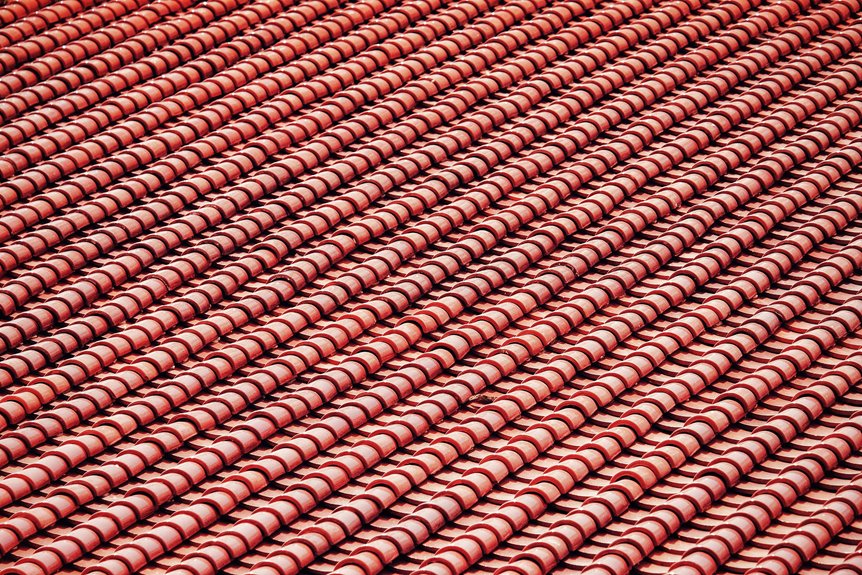Roof insulation plays a vital role in enhancing energy efficiency, maintaining comfortable indoor environments, and reducing heating and cooling expenses. Commonly used materials include spray foam, fibreglass, and rigid boards such as polystyrene. Each of these options offers varying levels of insulation effectiveness, typically measured in R-values.
The costs associated with roof insulation can differ based on the chosen material and the size of the roof. However, proper installation is essential to achieve optimal performance. By understanding these insulation options, homeowners in the UK can select the most suitable solution that aligns with their climate conditions and budget.
Take the time to explore how to choose the best insulation tailored to your specific requirements, ensuring your home remains comfortable and energy-efficient throughout the year.
Types of Roof Insulation Materials
There are several common types of roof insulation materials, each offering distinct advantages depending on the building’s requirements.
Spray foam insulation delivers exceptional thermal performance and effectively fills gaps, creating an airtight seal. Although it may entail a higher initial investment, it can lead to significant energy savings over time. Spray foam can also help reinforce the structural integrity of the roof in addition to providing insulation.
Fibreglass insulation is a cost-effective option that’s widely available and non-toxic. It’s often used in batt or roll form and possesses resistance to fire and mould, making it a reliable choice for many applications.
Expanded polystyrene (EPS) is lightweight, recyclable, and durable, making it suitable for structures that require strength; however, it’s less resistant to moisture.
Polyisocyanurate, commonly referred to as Polyiso, boasts a high R-value and durability, which makes it a preferred choice for low-slope roofs.
Structural Insulated Panels (SIPs) integrate insulation with structural strength, delivering both efficiency and stability for energy-conscious buildings.
Thermal Performance and R-Values
Understanding how well insulation performs in a roof relies on a measure known as R-Value, which signifies the material’s resistance to heat flow. A higher R-Value indicates superior insulation and potential energy savings. R-Value measures insulation’s heat resistance. Here are some key points to consider: R-Value increases with the thickness of insulation, although it can decrease if materials are compressed during installation. Using multiple layers of insulation can enhance overall thermal resistance. Different materials exhibit varying R-Values; for instance, spray foam provides high R-Values per inch, while materials like asphalt shingles offer minimal insulation. Proper installation is vital; issues such as gaps, compression, or thermal bridging through the framing can diminish effective R-Values. Aligning R-Values with climate zones is crucial to ensure roofs maintain the desired temperature, thereby enhancing the comfort and energy efficiency of homes.
Cost Considerations and Budgeting
Cost considerations are crucial when planning roof insulation projects, as the selection of materials and the area size directly affect the overall budget. The prices of various insulation materials can vary significantly. For instance, traditional insulation options tend to be more economical compared to newer, advanced solutions. Different materials also have varying R-values, which influence their effectiveness and cost. Larger roofs necessitate more materials and labour, which can drive up total expenses. Projects such as attic insulation can vary widely in terms of cost, depending on the specific requirements. Labour charges for installation usually fall within a certain range, and these can fluctuate based on the complexity of the project and the local market. Additionally, local building regulations and climate conditions can influence overall costs, particularly when higher thermal performance is required. To maintain budgetary control, many homeowners opt for hybrid or cost-effective materials, striking a balance between insulation performance and affordability. Proper planning and consideration of all these factors can lead to an effective insulation solution that meets both financial and energy efficiency goals.
Benefits and Suitable Applications
The advantages of roof insulation go beyond mere energy efficiency, enhancing comfort, health, and environmental sustainability. Effective insulation helps maintain stable indoor temperatures and minimises drafts, contributing to a more inviting home atmosphere. It also enhances indoor air quality by reducing the infiltration of outdoor pollutants and allergens. R-value measures how well insulation resists heat flow, ensuring that the chosen material provides adequate thermal resistance for your specific climate and needs.
For varied requirements, several types of insulation are available:
- Foam board insulation offers high thermal performance, is moisture-resistant, and is particularly suitable for attics and roofs.
- Loose-fill or blown-in insulation is excellent for filling irregular spaces and is ideal for retrofitting existing structures.
- Spray foam insulation provides outstanding sealing capabilities and thermal resistance, making it perfect for complex roof designs.
- Cool roofs, with their high solar reflectance, are best suited for warm climates and urban areas, helping to mitigate the heat island effect.
Selecting the appropriate type of insulation ensures both comfort and energy efficiency, making homes more welcoming and environmentally conscious.
Conclusion
Choosing the right roof insulation is crucial and depends on various factors such as material, cost, and climate. Different options provide varying thermal performances, making it important to understand R-values to ensure energy efficiency.
Budget considerations also play a significant role in selecting suitable materials. Effective insulation can lead to increased comfort and reduced energy bills. By carefully evaluating these aspects, homeowners can make informed decisions that enhance their home’s insulation. This ultimately contributes to a more energy-efficient and comfortable living environment.
When considering roof insulation, it’s essential to explore options like fibreglass, mineral wool, and cellulose. Each of these materials has its own set of benefits, including sustainability and ease of installation, which can suit different preferences and needs.
Moreover, understanding local climate conditions can influence the choice of insulation. For instance, regions with colder temperatures may require more effective thermal barriers to retain heat, while warmer areas might benefit from reflective insulation to maintain cooler indoor temperatures.
In summary, selecting the appropriate roof insulation involves a thorough assessment of materials, costs, and climate factors. This thoughtful approach not only enhances energy efficiency but also significantly improves the overall comfort of your home.

